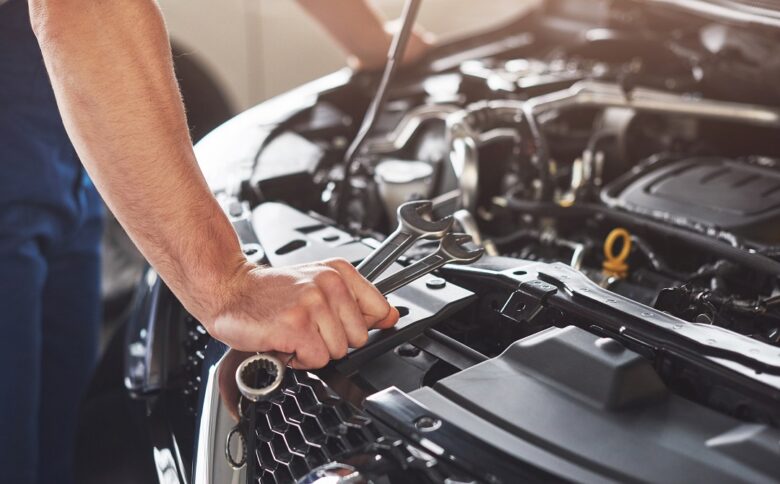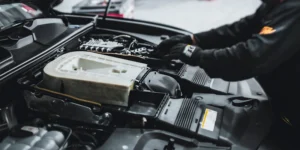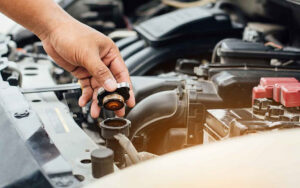Your car’s engine is its beating heart; to keep it working optimally and avoid potential engine issues, regular maintenance should be performed. Here are a few helpful hints to do just that.
Prevent water damage to your engine by spraying a degreaser throughout the entire engine area.
Check the Oil
Engine oil is essential to keeping your car running at its best, as it lubricates all the moving parts to prevent them from wearing down too quickly and leading to costly repairs. Furthermore, engine oil helps protect against engine overheating – one effective way of maintaining optimal performance for your vehicle is checking and topping up its levels regularly.
Before checking your oil, ensure your vehicle is on level ground and shut off, to allow any remaining liquid to return to the pan and provide an accurate reading. Some manufacturers suggest conducting an oil change when the engine is warm rather than cold; for more specific advice consult your owner’s manual.
Once your vehicle is powered off, pop open its hood and locate the dipstick (usually with an orange or red handle sporting an oil can). Remove and wipe down with a clean rag for a clear reading before reinserting all the way into its socket; this should allow you to see where oil lands between minimum and maximum marks – if it drops too low simply add an additional quart.
Change the Filter
As dirt accumulates in a filter, it reduces airflow and prevents new dust from entering the engine, eventually shortening its lifespan and leading to wear-and-tear wear. You should replace your filter every 30,000 miles. You can check its condition by opening up your hood and looking for a large black box sitting either on top of or alongside your engine with a hose coming from it; if it appears dirty, dusty or otherwise damaged then now may be an opportune time to change it!
You will require various tools in order to complete this project, such as:
Before beginning this task, be sure to park in a clear, flat area and close all windows before beginning this maintenance task. Also allow the vehicle to cool off so as to prevent accidental burns. With everything ready, open up the hood and locate the air filter box; these are often secured with snaps, clips, screws or wing nuts; use a butter knife or flathead screwdriver to pry them open so you can remove its cover and pry off its old filter then install your new one and close its cover securely again before starting up the engine to ensure its proper installation then close off hood and take pride in successfully completed maintenance task!
Check the Spark Plugs
Spark plugs on vehicle engines ignite the fuel-air mixture in each cylinder and, once activated, force down on piston that drives crankshaft thereby producing torque which in turn turns wheels of your car.
Spark plugs work by applying high voltage between their central metal pin and side or ground electrode, creating an electric spark to ignite your engine’s air/fuel mix in its cylinders. When these spark plugs go bad, however, this vital process cannot work effectively and the vehicle may fail to run normally.
As part of an inspection for spark plugs, make sure that they are free from hard black deposits on both electrode and insulator tips. Such deposits can obstruct the spark gap and prevent smooth combustion of your fuel; should they be found, either replace or adjust your ignition system immediately.
An easy and fast way to test a spark plug is using a spark plug tester, available from any auto parts store for about $10. Simply attach it to the end of each spark plug wire, start up your engine, and look for any evidence of sparking at its tip – if none exists then further diagnostics may be required.
Check the Exhaust
Your car’s exhaust system serves a number of crucial roles, from ensuring fuel is used correctly to keeping harmful fumes away from the cabin, and reducing pollution. Any leakage could reduce efficiency, cause the vehicle to run rougher, make passing smog checks more challenging and even lead to carbon monoxide poisoning if leakage becomes significant enough.
An alarming noise coming from underneath your vehicle could indicate that an exhaust pipe has come loose. This poses serious hazards to both driver and other cars on the road as sparks could fly and spark fires if left alone; to remain safe it’s wiser to stop immediately and call for assistance rather than continuing your drive.
Smoke coming from your engine area is another telltale sign. Different colored exhaust smoke signals various issues; blue can indicate mixing of oil and gasoline (causing engine oil burning), while black or white/gray may mean overfueling, insufficient air entering combustion process (causing misfiring), or your catalytic converter is malfunctioning.
Regular exhaust leak checks should be carried out on your car to detect leaks. To do this, ensure it’s on a flat surface with its front lifted using a jack before using soapy water to spot potential leaks by spraying suspect spots with soapy water and watching out for bubble formation; this method is particularly helpful in finding leaks near exhaust manifolds, flanges, joints or O2 sensor points.


